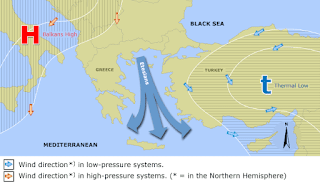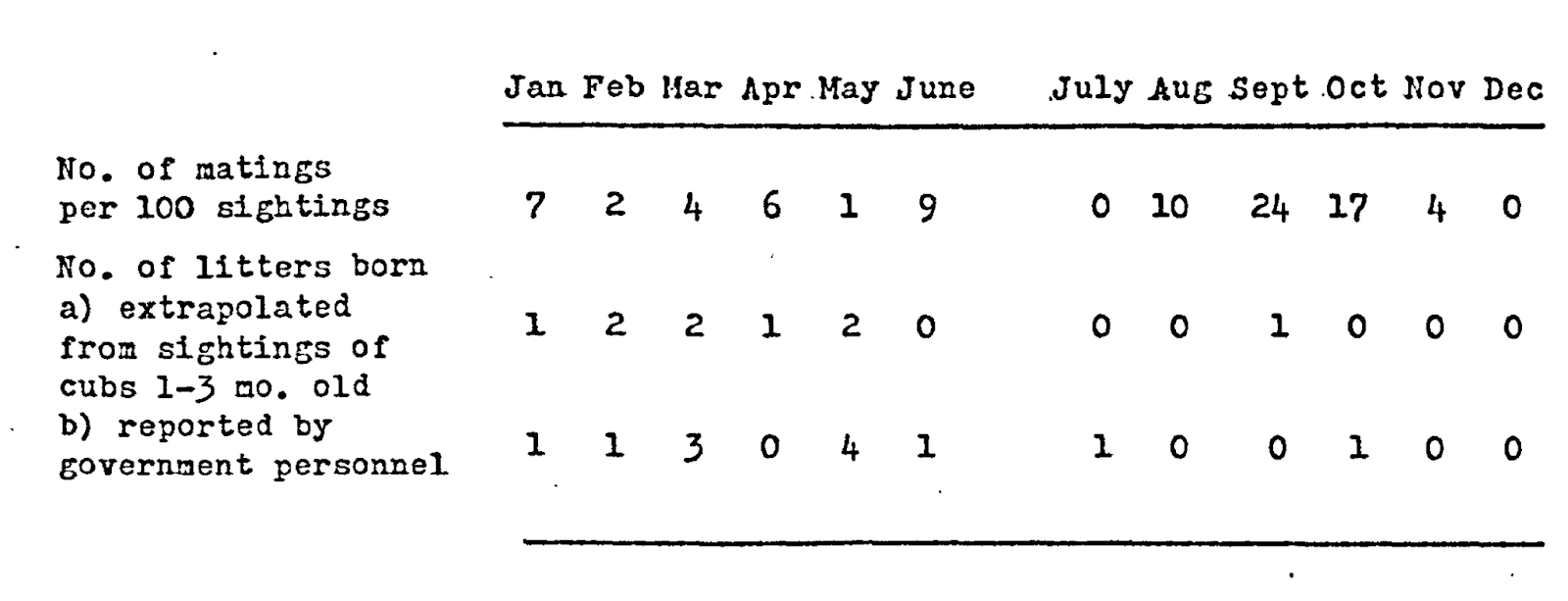This is a 490 BC Etruscan hydria from Vulci, previously belonging to the Feoli Collection. shows Apollo in the centre, holding his lyre, seated on the Delphic tripod...with a dolphin to either side of the tripod...
What's with Apollo and dolphins?
Well, one of Apollo's epithets was Δελφίνιος (Delphinius, Delphinios), literally "Delphic", after Δελφοί (Delphi). An etiology in the "Homeric Hymn of Apollo" associated this with dolphins...
The earliest account of the origin of the Delphic oracle is provided in the Homeric Hymn to Apollo, which recent scholarship dates within a narrow range, c. 580–570 BC...
It describes in detail how Apollo built his temple in "Crisa beneath snowy Parnassus" and how then he went looking for priests that will serve him...
For some weird reason, Apollo chose his first priests to be "Cretans from Minos' city of Knossos" who were voyaging on a "black ship" across the sea. Apollo leapt into the ship in the form of a dolphin "a great and awesome monster"...
Dolphin-Apollo then forced the ship to sail to Parnassus where: "...like a star at noonday, the lord, far-working Apollo, leaped from the ship: flashes of fire flew from him thick and their brightness reached to heaven..."
"...He entered into his shrine between priceless tripods, and there made a flame to flare up bright, showing forth the splendor of his shafts, so that their radiance filled all Crisa, and [all who saw it] raised a cry...for he cast great fear upon them all..."
"...From his shrine he sprang forth again, swift as a thought, to speed again to the ship, bearing the form of a man, brisk and sturdy, in the prime of his youth, while his broad shoulders were covered with his hair: and he spoke to the Cretans, uttering winged words..."
"...guard my temple and receive the tribes of men that gather to this place"...
Interestingly, the Cretan archaeological finds from Delphi, dating from the 8th to the late 7th c. BC confirm that there once might have been Cretan priests at Delphi. But why Apollo as a dolphin? 🙂
This is the famous Minoan "dolphins fresco" from Knossos, Crete, dated to 1500BC...
Old Cretans, Minoans, were really into Dolphins, as any Mediterranean Maritime culture should be. Why? Cause of animal calendar markers of course. Dolphin was an animal calendar marker for Apr/May-Oct/Nov.
Guess what? Apr/May-Oct/Nov is also the sailing season in Eastern Mediterranean. I talked about it in my post "Three sacrifices", where I analyse this crazy story from the beginning of the Trojan war:
Greeks are sacrificing to the sun god waiting for good winds to sail to Troy, when suddenly, a snake slithered from the altar to a sparrow's nest in platanus tree nearby. It ate the mother and her nine chicks, then was turned to stone. And then the good winds started to blow....Eee what? Why? Because the sailing winds in Eastern Mediterranean start blowing in Apr/May, when platanus trees start blooming, the sparrows are nesting and the vipers start mating...
BTW, note that the Greeks are praying to the Apollo for good wind...Good winds which blow from Apr/May to Oct/Nov, the dolphin season...Why?
It is the sun (Apollo), that heats up the Eastern Mediterranean...Which creates an updrift, which sucks the cooler air from Europe to start streaming southward, creating the etesian trade winds...And they get stronger as the summer progresses...
Minoans also depicted dolphins as "a great and awesome monsters" attacking goats. Why? Again, cause of animal calendar markers. I talked about this in my post "Horned animal attacked by a dolphin"...
This is a typical climatic chart for Crete
On Crete, the cool, wet season starts in Oct/Nov, when wild goats start to mate, and the hot, dry season starts when dolphins start to mate...So dry/good winds/sailing season (dolphin) ending (killing) wet/bad winds/no sailing season (goat)
Interestingly, Minoans seem to have linked lions with dolphins. Why? Well, cause the middle point between the beginning and the end of the dolphin mating season, Jul/Aug, Leo, is according to Hesiod "the best time to go to the sea"...
I talked about this in this post about this silver Tetradrachm from Byblos, Phonecia, apparently, minted during the reign of Adramelek, 315 BC-...and currently in the British Museum...
So what's that got to do with Apollo as a dolphin?
In Greece, the sun god Shamash, more precisely the "terrible" sun, Shamash as Nergal, became Apollo. The "terrible" sun god Apollo...I explained why terrible in my post "Apollo from Delos" about the lions from the 600 BC Temple of Apollo from Delos:
So Apollo would then be this dude, Sun in Leo...
Nergal, the deified destructive "burning" sun, was depicted as a lion man, because Jul/Aug, Leo, is the hottest and driest part of the year in Mesopotamia...
Talked abut him in my post "Winged superhuman hero"...
BTW, Leo originally had nothing to do with stars. It was an animal calendar marker marking the beginning of the main mating season of Eurasian lions, which starts at the beginning of autumn, Jul/Aug and spans the whole of autumn, (Jul/Aug - Oct/Nov)...
Hence lion as an animal calendar marker for Jul/Aug, Leo. And why lion is the symbol of autumn in general (Jul/Aug - Oct/Nov)...I talked about this in my post "Symbols of the seasons"...
So sun in Leo = Apollo as dolphin?
So maybe whoever wrote the "Homeric hymn to Delphic Apollo" wasn't just making ridiculous link between unrelated terms Apollo Δελφίνιος (Delphinios) and δελφίν, Koine form of δελφῑ́ς (dolphin)...
Check this out: δελφῑ́ς (dolphin) comes from Proto-Indo-European *gʷelbʰ- (womb), so originally it meant "fish with a womb". Now Δελφοί (Delphi), comes from the same Proto-Indo-European root *gʷelbʰ meaning womb.
Apollo's temple in Delphi was originally, according to legends, temple of Gaia, the old Mother Earth. And, again according to legends, the temple was located "at the centre of the earth" which was marked with ὀμφαλός (omphalós) meaning navel stone.
So we have a navel of the mother earth...In the place called Womb...So what was then (symbolically 🙂) the crack in the earth that the oracle sat over while reciting her prophecies? What makes every woman a woman, including Mother Earth?
















No comments:
Post a Comment